Is your UPS secretly straining your building's power or generator? Poor input power factor can cause hidden issues, leading to higher energy costs and system instability.
UPS input power factor measures how efficiently a UPS draws power from the utility mains or a generator. A high input power factor (close to 1.0) means the UPS draws power cleanly and efficiently, reducing stress on the electrical supply and minimizing wasted energy.
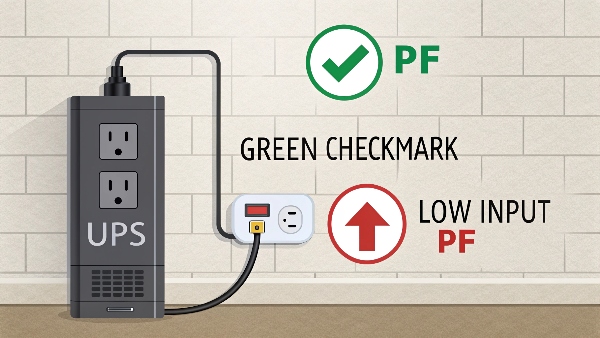
Transition Paragraph:
When we talk about UPS systems, most people focus on the output – what power it delivers to their precious equipment. And that's vital! But as an OEM/ODM manufacturer at Daopulse for a decade, I've learned that what happens on the input side is just as crucial, especially for our clients managing large infrastructures like data centers or hospitals. The input power factor tells us a lot about how "nicely" the UPS plays with your electrical system. Let's dig into this often-overlooked aspect.
What is the difference between a power factor and a UPS?
Confused about how "power factor" relates to your UPS? It's easy to mix them up, but understanding this helps you see how efficiently your power protection system operates.
Power factor is an electrical characteristic describing how effectively current is converted into useful work. A UPS is a device that has both an input power factor (how it draws power) and an output power factor (how it delivers power to loads).
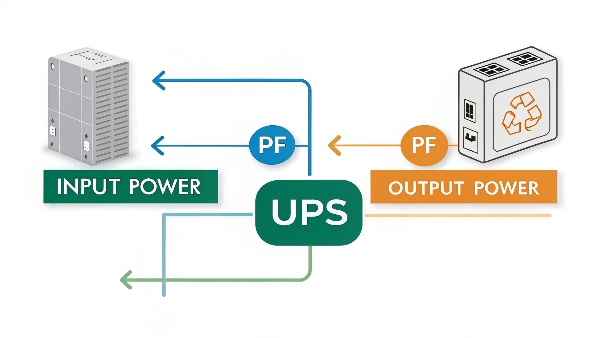
Dive deeper Paragraph:
Let's break this down. Power factor (PF) isn't exclusive to UPS systems; it applies to almost any device that uses AC electricity.
Imagine you're pushing a lawnmower. The force you push directly forward does the work (moving the mower). If you also push downwards a bit, that downward force doesn't help it move forward.
- Real Power (Watts): Like the forward push, this is the power that does actual work – running your computer, lighting a bulb.
- Reactive Power (VAR): Like the downward push, this power is required by some devices (those with motors or coils) to create magnetic fields, but it doesn't do "useful" work.
- Apparent Power (VA): This is the total power, combining real and reactive power, that the electrical system must supply.
Power Factor is the ratio of Real Power to Apparent Power (PF = Watts/VA). A PF of 1.0 (unity) is ideal, meaning all power supplied is useful.
A UPS is an electrical device, so it consumes power from the mains (input) and delivers power to your equipment (output).
- UPS Input Power Factor: Describes how efficiently the UPS draws power from your wall outlet or generator. A high input PF (e.g., >0.95) means the UPS is a "friendly" load, drawing current smoothly and in phase with the voltage. This is what we'll focus on in this article.
- UPS Output Power Factor: Describes the UPS's ability to power loads that might have their own power factor characteristics. We've discussed this in other articles; it dictates how many Watts the UPS can deliver for its VA rating.
At Daopulse, we design UPS systems with high input power factor correction (PFC) to ensure they are efficient and compatible with generator sets, which is crucial for many of our clients.
| Aspect | General Power Factor | UPS-Specific Power Factor |
|---|---|---|
| Definition | Ratio of Real Power (W) to Apparent Power (VA) | Applies to both how UPS draws power and how it delivers power |
| Significance | Indicates efficiency of power usage by any AC device | Input PF: impacts utility/generator. Output PF: load capacity |
| Ideal Value | 1.0 (Unity) | Input PF: >0.95 is good. Output PF: Matches modern load PF (0.9-1.0) |
| Who is concerned? | Electrical engineers, energy auditors | UPS users, facility managers, generator operators |
Can I use a 1200VA UPS for my 850W PSU and a monitor?
Got a powerful PC and wondering if your UPS can handle it? This is a common sizing question, and the answer lies in the UPS's output capabilities, not just its VA rating.
Yes, likely. A 1200VA UPS, if it has a decent output power factor (e.g., 0.8 or higher), can typically handle an 850W Power Supply Unit (PSU) plus a monitor. Modern PSUs often don't draw their maximum rated wattage continuously.
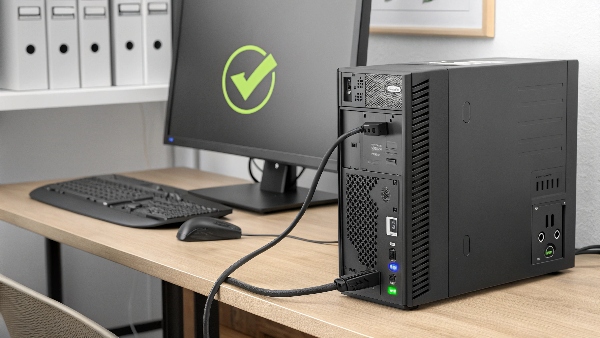
Dive deeper Paragraph:
This question primarily concerns the UPS's output wattage capacity. Let's break it down:
- PSU Rating (850W): This is the maximum power your PC's power supply can deliver to the PC components. Your PC rarely uses this full amount constantly. Typical usage might be 200-500W depending on the task (idle, gaming, heavy processing).
- Monitor Power: A typical monitor might consume 20-50W. Let's assume 50W for a larger one.
- Total Potential Load: Worst case, 850W (PSU) + 50W (monitor) = 900W.
- UPS Capacity (1200VA): The key here is the UPS's output power factor.
- If the 1200VA UPS has an output power factor of 0.7, it can deliver 1200 * 0.7 = 840 Watts. This would be insufficient for your 900W peak.
- If it has an output power factor of 0.8, it delivers 1200 * 0.8 = 960 Watts. This is sufficient.
- If it has an output power factor of 0.9 or 1.0 (unity), it delivers 1080W or 1200W respectively, which is even better.
Most modern UPS units we manufacture at Daopulse for such applications have output power factors of 0.8 or higher. So, a 1200VA unit is generally a good choice. While this is about output, remember that a well-designed UPS also considers its input power factor. A UPS efficiently supporting this load should also draw power efficiently from the mains, reducing energy waste and electrical noise. This efficiency is reflected in a high input PF.
| Component | Estimated Power (Watts) | Consideration |
|---|---|---|
| PC PSU (850W rated) | 200W (idle) - 700W (heavy load) - 850W (peak theoretical) | Actual draw varies; peak is rare. |
| Monitor | 30W - 50W | Relatively stable load. |
| Total Estimated Load | ~250W - 900W | Size UPS for peak plus some headroom (20-25%). |
| UPS: 1200VA | Output Watts? | Depends on Output PF (e.g., 0.8 PF = 960W) |
| UPS Input PF Impact | N/A for sizing load | A high input PF means the UPS draws this power cleanly. |
Will a 550VA UPS be able to power a 700W PC?
Trying to run a high-power PC on a smaller UPS? This often leads to problems, as the UPS might not have enough wattage capacity, regardless of its VA rating.
No, a 550VA UPS will almost certainly not be able to reliably power a 700W PC. Even if the UPS had a perfect unity (1.0) output power factor, it would only provide 550 Watts, which is less than the PC's 700W requirement.
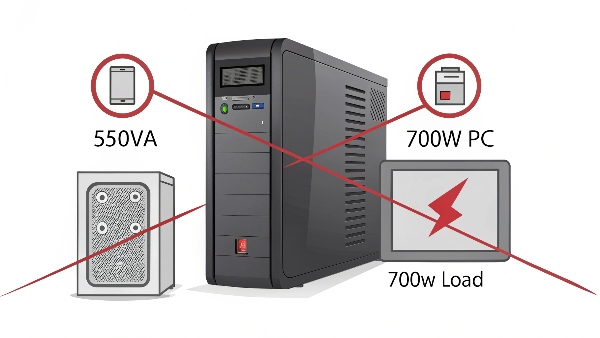
Dive deeper Paragraph:
This is a clear case of mismatched capacity. The primary number to look at for your PC's consumption is Watts (W). The UPS must be able to supply at least that many Watts.
A 550VA UPS, depending on its output power factor (PF), will deliver:
- With a 0.6 PF (common in older/cheaper UPS): 550VA * 0.6 = 330 Watts.
- With a 0.7 PF: 550VA * 0.7 = 385 Watts.
- With a 0.8 PF: 550VA * 0.8 = 440 Watts.
- With a 1.0 PF (unity, rare for this size but best case): 550VA * 1.0 = 550 Watts.
None of these scenarios provide the 700 Watts your PC requires. Attempting to run a 700W PC on such a UPS would likely result in the UPS immediately overloading and shutting down, or frequently switching to battery and depleting it very quickly. It offers no real protection.
When we advise clients at Daopulse, like System Integrators planning installations, we always stress matching the UPS's Watt output to the load's Watt requirement, with a 20-25% buffer. And while we're talking about drawing power, an overloaded UPS, if it even tries to function, will draw excessive current from the mains, likely with a very poor input power factor, stressing your building's wiring. This is another reason why correct sizing, considering both output and the implied input characteristics, is vital.
| UPS VA Rating | Example Output PF | Max Output Watts | PC Requirement (Watts) | Decision |
|---|---|---|---|---|
| 550VA | 0.6 | 330W | 700W | Inadequate |
| 550VA | 0.7 | 385W | 700W | Inadequate |
| 550VA | 0.8 | 440W | 700W | Inadequate |
| 550VA | 1.0 (Unity) | 550W | 700W | Inadequate |
How many watts can a 1200VA UPS handle?
You've got a 1200VA UPS and need to know its actual power delivery in Watts? The answer hinges entirely on its specified output power factor. This number bridges VA and usable Watts.
A 1200VA UPS can handle a Watt load equal to 1200 multiplied by its output power factor. For example, if its power factor is 0.8, it handles 960W. If it's 1.0 (unity), it handles 1200W.
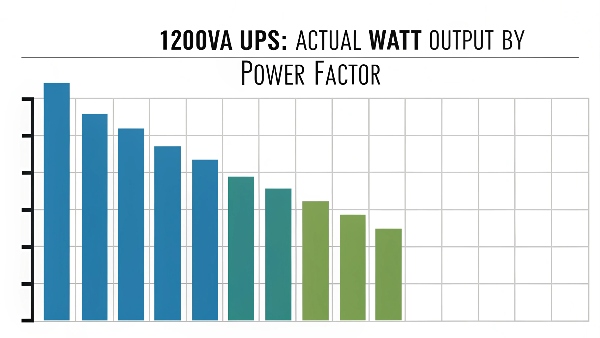
Dive deeper Paragraph:
The VA (Volt-Amps) rating tells you the apparent power the UPS can manage, while Watts tell you the real power it can deliver to do useful work. The bridge between these is the UPS's output power factor.
Here’s how it works for a 1200VA UPS:
- If Output PF = 0.7 (older or basic models): 1200VA * 0.7 = 840 Watts.
- If Output PF = 0.8 (common for many good quality UPS): 1200VA * 0.8 = 960 Watts.
- If Output PF = 0.9 (modern, efficient UPS): 1200VA * 0.9 = 1080 Watts.
- If Output PF = 1.0 (unity power factor, best case): 1200VA * 1.0 = 1200 Watts.
Now, shifting focus to the main topic: input power factor. Once you know your 1200VA UPS can handle your load (e.g., it's a 1080W max output model and your load is 800W), how does the UPS itself look to the power grid or your generator? This is where its input power factor matters.
A UPS with a poor input PF (say, 0.7) draws current out of phase with the voltage, or in non-sinusoidal pulses. This means it draws more current (Amps) from the wall for the same amount of power delivered, leading to:
- Higher energy losses in wiring.
- Increased stress on electrical infrastructure (breakers, transformers).
- Potential compatibility issues with generators, which prefer loads with high power factor.
- Harmonic distortion pushed back onto the power line, which can affect other sensitive equipment.
At Daopulse, our advanced UPS systems incorporate input power factor correction (PFC) circuitry, often achieving input PF >0.98. This ensures they are efficient, "grid-friendly," and ideal for clients with sensitive environments or generator backup.
| 1200VA UPS Output PF | Max Output Watts | Implication for Load | Typical UPS Input PF Characteristic (Conceptual) | Input PF Benefit |
|---|---|---|---|---|
| 0.7 | 840W | Suitable for loads up to 840W. | Older designs might have lower input PF (~0.6-0.7) | Less efficient draw from mains. |
| 0.8 | 960W | Good for many general-purpose IT loads. | Better designs might have input PF ~0.8-0.9 | Moderate efficiency. |
| 0.9 | 1080W | Excellent for modern IT equipment with high PF. | Modern designs often have Active PFC (>0.95) | High efficiency, low harmonics. |
| 1.0 (Unity) | 1200W | Maximum utilization of VA rating for pure Watt loads. | Usually coupled with high Input PFC (>0.98) | Optimal efficiency, very grid-friendly. |
Conclusion
Understanding UPS input power factor is key to an efficient and stable power system. It ensures your UPS draws power cleanly, minimizing stress on your electrical infrastructure and utility bills.

